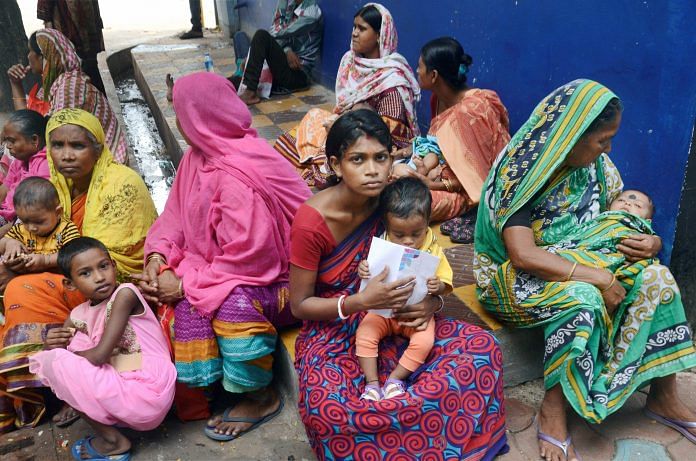India has slipped to its worst ranking of 108 in gender gap rankings, and experts say improvements are needed across the board – from political representation to healthcare.
New Delhi: The sharp fall in India’s position on the World Economic Forum’s Global Gender Gap Index this year is not a sudden development. Experts said it was a reflection of years of sliding indicators across sectors but this was not reflected in the past as all data points were not available to present a complete picture.
In the latest index, released this week, India slipped to 108th out of 144 countries, 21 positions down on its 2016 rank, and its worst-ever mark since the rankings were first compiled in 2006. The two parameters India ranks most poorly on are ‘economic opportunity’ and ‘health and survival’.
Also read: Gender gap widening: India slips 21 spots to 108th on World Economic Forum’s index
Political empowerment
Countries ahead of India in the 2017 rankings — like Malaysia, Indonesia, Cambodia, Maldives, and Swaziland — have leapt forward owing to their progress in political empowerment and better representation of women. Swaziland, in particular, shines through with progress towards gender parity reflected by a female head of state, and improvements in ‘economic participation and opportunity’.
But India is yet to pass its women’s reservation bill, and needs to improve political representation, despite its decent rank of 20th in the world. After all, Rwanda has darted into the top five in the index with the highest share of female parliamentarians in the world.
Labour force participation and education
According to Ravinder Kaur, professor of sociology at the Indian Institute of Technology, Delhi, female labour force participation was already showing a falling trend between the last two National Sample Survey rounds, and has just reflected in the report this year.
“Various reasons for this have been speculated upon – decline in employment per se; less expansion in opportunities for women; more women spending longer in education, hence not found in the workplace during that time period; many women withdrawn from work when the household prospers – among some classes/castes, it is a sign of status and honour if women do not work outside,” Kaur said.
There exists a deep-rooted cultural issue, where educated women tend to perform “concentrated cultivation” of children – grooming them for competitive exams and careers – by staying at home, even though they could enter the working world, she said. Many women were not allowed to work because “status-appropriate” work was not available.
Although India has successfully closed its gender gap in primary as well as secondary education, women still continue to have disparate access to higher education.
According to government data, the dropout rate for girls at the primary level is less than boys; however, more girls drop out at thesecondary level than boys. A UNESCO study shows that 81 per cent girls attend primary school all the way, but the number dwindles to 49 per cent as they reach secondary school.
Healthcare a major worry
It is not just the inaccessibility to education, but the inaccessibility to proper healthcare that deters women from contributing to the economy. With an extremely skewed sex ratio at birth, India has landed at the fourth-lowest rank on the global index.
“Studies of health-seeking behaviour generally show that males get preference; ideal types and stereotypes of males as sole breadwinners encourage preference being given to their health and the culture of son-preference in many parts of the country. In general, too, healthcare provision in the country is poor,” said Kaur.
Ashwini Deshpande, professor at the Delhi School of Economics, added: “Even if the participation in paid work increases but the health of women does not increase in steps, life expectancy does not change, basic health indicators do not improve, and other countries’ rankings change, there wouldn’t be an improvement in India’s own ranking.”
What is the solution?
Prof. Deshpande said there’s no quick-fix solution to the rankings. “The point is, there is no magic bullet. If we think that we can fix one problem and that is going to take care of the rankings, that’s not going to happen,” she said.
India can probably take a leaf out of neighbour Bangladesh’s book. Bangladesh remains one of the top-ranking countries in the South Asian region (47th overall), having closed 67 per cent of its overall gender gap.
According to the report, Bangladesh has climbed up several spots this year due to its efforts in improving economic opportunities for women, gender parity for various managerial, technical, and legislative positions, as well as increasing equality in wages of both genders for similar work.



